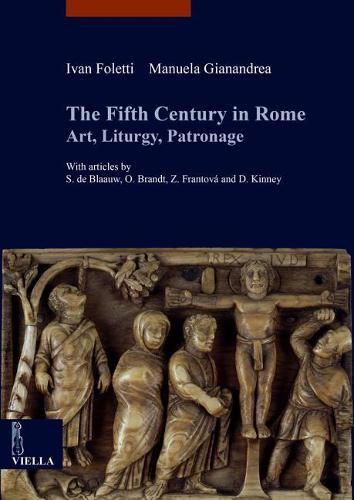Readings Newsletter
Become a Readings Member to make your shopping experience even easier.
Sign in or sign up for free!
You’re not far away from qualifying for FREE standard shipping within Australia
You’ve qualified for FREE standard shipping within Australia
The cart is loading…






The objective of this book is to draw attention to fifth-century Rome - to those hundred years which even today need to be looked at from different perspectives. It is a key moment, a border between worlds, far too important not to receive further attention. The studies, presented here together, aim to respond to new demands: the art object remains at the centre, but with a new search for its context. This context would be unthinkable without the key concept of co-existence - between popular and elite culture, popes and emperors, pagans and Christians. As well as between liturgy - intrinsically necessary to the Christian world - and patronage - the intellectual project which stems from a cultural concept. Moreover, co-existence is crucial between the mindset of the Roman elites (the tradition inscribed in the city’s DNA), and new internal and external demands arising from this rich moment in the history of Rome. The fifth-century, studied in this book, is the moment in which future and past meet, and Antique and Christian coincide. An artistic moment with only one identifying feature: its incredibly rich complexity.
$9.00 standard shipping within Australia
FREE standard shipping within Australia for orders over $100.00
Express & International shipping calculated at checkout
The objective of this book is to draw attention to fifth-century Rome - to those hundred years which even today need to be looked at from different perspectives. It is a key moment, a border between worlds, far too important not to receive further attention. The studies, presented here together, aim to respond to new demands: the art object remains at the centre, but with a new search for its context. This context would be unthinkable without the key concept of co-existence - between popular and elite culture, popes and emperors, pagans and Christians. As well as between liturgy - intrinsically necessary to the Christian world - and patronage - the intellectual project which stems from a cultural concept. Moreover, co-existence is crucial between the mindset of the Roman elites (the tradition inscribed in the city’s DNA), and new internal and external demands arising from this rich moment in the history of Rome. The fifth-century, studied in this book, is the moment in which future and past meet, and Antique and Christian coincide. An artistic moment with only one identifying feature: its incredibly rich complexity.